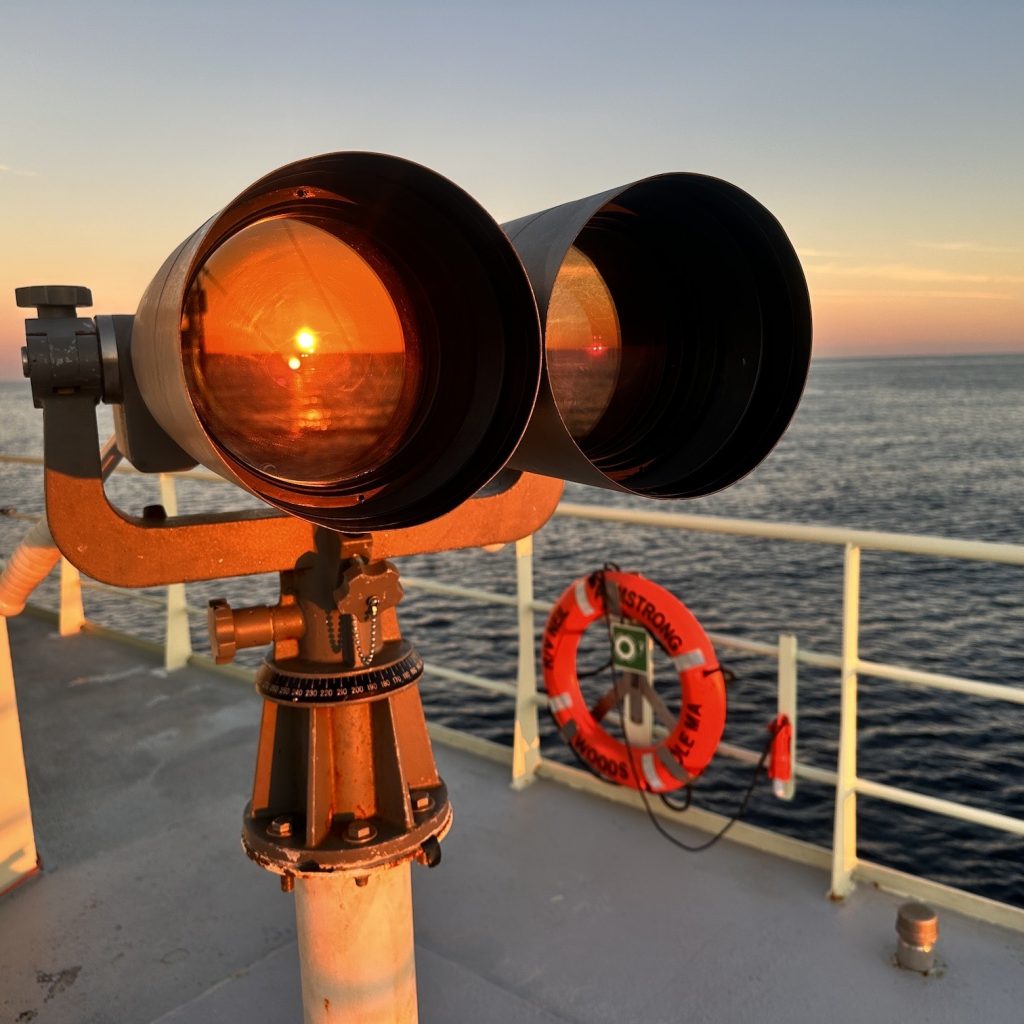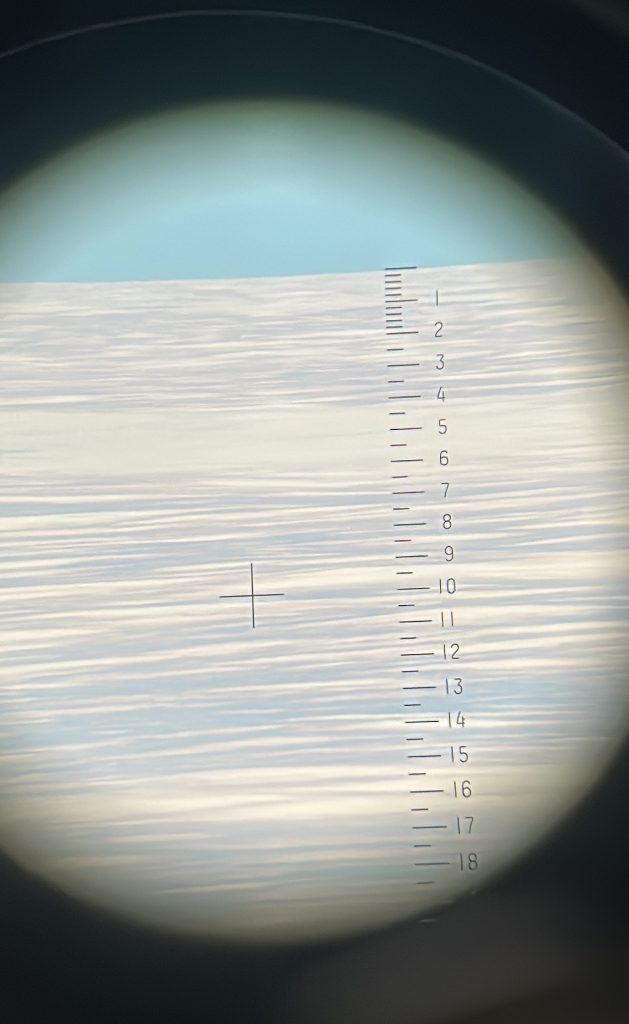
Big Eyes Along the Mid-Atlantic Coast

Big Eyes on deck: The large binoculars are mounted on a platform on the bow of the R/V Armstrong to allow unobstructed views of the sea. Credit: Corey Accardo, NOAA.

Big eye view: A view through the eyepiece shows the world as seen by the marine mammal observer. Credit: Corey Accardo, NOAA.

Big eye moon: Objects other than marine mammals can be brought up-close by the big eye binoculars. Credit: Corey Accardo, NOAA.
Large binoculars called “big eyes” are used to help marine mammal observers detect and identify distant sightings. Personnel from the NOAA National Marine Fisheries Service were graciously included in the OOI Pioneer Array cruise as part of an exploratory survey targeting North Atlantic right whales and recording all other marine mammals encountered. The population is painfully small, with only around 350 individual North Atlantic right whales left. One of the most important subsets of this population, reproductive females and their offspring, use these waters offshore of the mid-Atlantic coast as a migratory corridor between the northern feeding grounds and the southern calving grounds. Right whale research on platforms of opportunity, and the WHOI R/V Neil Armstrong in particular, has become extremely important for conducting North Atlantic right whale surveys in this under-studied area.
